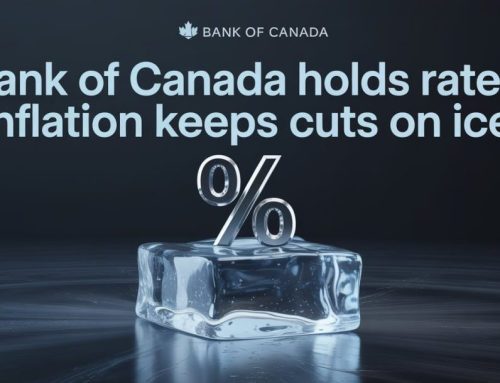A common goal for many mortgage borrowers is to get their mortgage paid off as soon as they can.
Who doesn’t want to be mortgage-free?
Pretty much all mortgages come with prepayment privileges, regardless of the lender. They are not created equal, however, so it’s important for you to have a good understanding of how your lender’s prepayment privileges work.
Prepayment privileges allow you to pay a specified amount towards your mortgage each year without penalty. This is over and above your scheduled payments.
Anytime you make an additional payment towards your mortgage, 100% of that payment will get applied to your principal. This will be the case 100% of the time with 100% of mortgage lenders. This will then increase the principal portion and will decrease the interest portion on each and every scheduled payment made thereafter.
Let’s explore further!
UNDERSTANDING YOUR PREPAYMENT OPTIONS
Prepayment privileges are generally written as 15/15 or 20/20 or example.
The first number represents the percentage you are allowed to increase your payments each year.
The second number represents the percentage of lump sum payment you can make, which is also an annual figure.
Let’s take a look at each component in more detail.
PAYMENT INCREASE PRIVILEGE
Let’s use a mortgage with 20/20 prepayment privileges as an example. This would allow you to increase your monthly payment (or biweekly, weekly, etc) by 20% per year. If you had a monthly mortgage payment of $2,000, then you would be able to increase this to $2,400, right from your first payment.
Stacking your payment increase privilege
You can then stack your payment increase in subsequent years. For example, if you were to utilize the payment increase privilege to the maximum, then the payments would look like this over your 5-year term:
Year 1 – $2,400
Year 2 – $2,600
Year 3 – $3,000
Year 4 – $3,400
Year 5 – $3,800.
Note that in the example above, the 20% payment increase privilege is based on your original payment amount. Not all lenders do it this way and some will use the increased payment each year, and then add the 20% on top of that. Using this method, if you were to max out your payment increase privilege, the payments would look like this:
Year 1 – $2,400
Year 2 – $2,880
Year 3 – $3,456
Year 4 – $4,147.20
Year 5 – $4,976.64
Note that you can only stack your payment increases like this if you fully utilize it each year. The payment increase privilege is not cumulative. For example, if you don’t use it in the first year, then you would forgo the 20% increase for that year. The 20% increase would start in the 2nd year and would be calculated based on the original payment amount of $2,000.
If you only use a portion of the payment increase privilege, then the 20% in the following year would be based on what you used. For example, if you increase your monthly payment to only $2,100 in the first year, then you would only be able to increase your payment to a maximum $2,500 in the second year.
Note that you can generally revert back to your original payment at any time. However, if maximizing your payment increase privilege each year, then some lenders may only let you revert back to the increased payment from the previous year. Let me explain a bit further.
Let’s say you are in year four using the first example above. Your monthly payment is now $3,400, however, your lender may only let you revert back to the $3,000 payment from year three, and not your original payment of $2,000. It’s best to check with your mortgage specialist to find out exactly what the lender’s policy is on this.
LUMP SUM PAYMENT PRIVILEGE
The second number in the 20/20 refers to the annual lump sum percentage. For example, if your starting mortgage balance is $500,000, then this would allow you to make a lump sum payment of up to $100,000 per year.
Some lenders will limit the number of times a lump sum payment can be made in a single year. There are many who are more flexible than this, however.
If you are dealing with a lender who limits you to making a lump sum payment once per year, then it doesn’t matter the size of the prepayment made. For example, if you are allowed to make a lump sum payment of $100,000, but you make a payment of $5,000, then you will not be able to make another lump sum payment until the following year. You then lose the opportunity to pay the remaining $95,000 for that year.
Fortunately, there are many lenders who do not have this limitation and will allow you to make as many prepayments as you like, providing they fall on a scheduled payment date and that they don’t exceed the annual limit. There are some lenders who will allow the prepayments at any time, regardless of whether it’s a scheduled payment date or not, however, this is quite rare.
Let’s look at how this works a bit further. If your annual lump sum prepayment limit is $100,000, then you can break it up any way you like. If making accelerated biweekly payments, then you would be able to make a maximum of 26 lump sum payments toward your mortgage per year (as there are 26 biweekly payments in one year). This means that you would be able to increase each biweekly payment by an additional $3,846.15, over and above your scheduled payment. You can break this up any way you like. $10,000 with one payment, $2,000 on another, $20,000 on another, and so on. As long as it doesn’t exceed 20% of the original mortgage balance.
Note that it’s the ‘original’ mortgage balance that is used. So even if you have paid down your mortgage substantially in the 4th year, your lump sum payment limit still remains at $100,000.
Combining both lump sum and payment increase privileges
Pretty much every mortgage lender will allow you to do any combination of payment increase and lump sum payments, providing that the total prepayment does not exceed the annual lump sum limit. For example, if the lump sum limit is $100,000, then the combination of both payment increases and lump sum payments cannot exceed this number.
There are however some lenders who will let you fully max out both.
Calendar year vs. anniversary year
Some lenders will calculate their annual prepayment privileges based on the calendar year, while others will use the anniversary year, meaning the anniversary of when you got your mortgage.
For example, if you closed your mortgage on April 15th, then the anniversary year would be April 15th of the following year. If dealing with a lender that limits you to prepayments once per year, this can be important to know. If they allow it based on the calendar year, then you would be able to make a lump sum payment on December 31st, then another on January 2nd (or first business day following New Years Day).
DOUBLE UP
Some lenders will add a double up feature to their prepayment privileges, so you’ll often see it written as 15/15 or Double Up. As the name implies, this allows you to double up your payments.
This can be a little misleading, however, as a lender may not specifically state that you can double up your payments, however, you may be able to exceed doubling your payment if your lender that does not limit how many times you can make lump sum payments.
For example, if you have a $500,000 mortgage at 2.59% amortized over 25 years, your monthly payment would be $2,262.30. Doubling up, of course, allows you to double this amount to $4,524.60.
However, if you are dealing with a lender that has 20/20 prepayment privileges with no limit to how many times you can make lump sum payments, then you would be able to increase your regular monthly payment of $2,262.30 by an additional $8,333.33 for a total payment of $10,595.63 per month. In this case, you’ve more than quadrupled your monthly payment! Just because a lender does not specifically have a double up option, does not mean that you cannot double up your payments…. and then some.
Prepayment privileges can vary from lender to lender. If prepaying your mortgage early is something that is important to you, then make sure your ask your mortgage specialist to explain the prepayment privileges in detail. Make sure the lender’s policy is flexible enough to allow you to meet your prepayment goals.








Leave A Comment